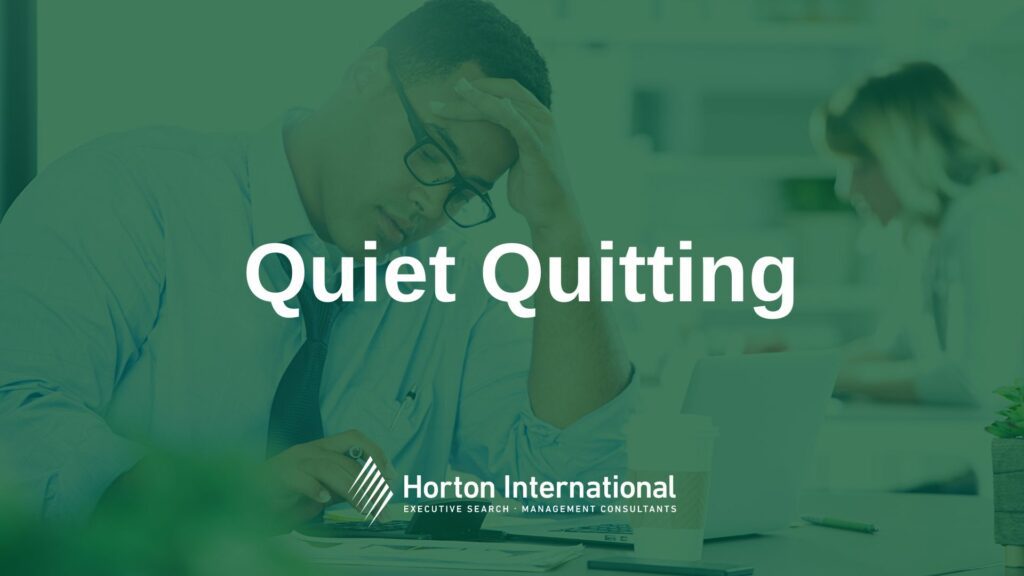Workplace burnout is a real and growing concern for employers. It’s not a new problem, either: the term “burnout” was first used in the medical field in the 1960s.
In recent years this phenomenon has received more attention as people have become more open to speaking about their lived experiences and personal mental health struggles.
This discussion around mental health and burnout has led to a new phenomenon in the workplace – quiet quitting. It’s taken the internet, and the world, by storm and is costing employers millions in lost revenue.
What is quiet quitting, and what does TikTok have to do with it?
Quiet quitting is when you’re still at work but not fully engaged. You might be reading articles on your phone or scrolling through Facebook. You may also be checking your email over and over again, even when there isn’t anything new to read, in an effort to look busy.
The “quiet quitting” phenomenon was first shared on TikTok and has seen explosive growth in the number of searches and discussions. The trend is a result of employees feeling ignored, underpaid, overworked or unappreciated in their jobs yet unable to quit due to financial commitments.
Instead of quitting, employees stay in their current job role but stop putting in the effort because they’ve lost interest or motivation at work. Again, it’s a conscious decision to do the bare minimum rather than putting all of their effort into something that leaves them feeling unfulfilled.
Experts say that quiet quitting can lead to other forms of employee disengagement like absenteeism, higher staff turnover, and long-term decreased performance for the overall business.
What causes quiet quitting, and is quiet quitting the same as burnout?
Amelia Nagoski, co-author of “Burnout: The Secret to Unlocking the Stress Cycle,” believes that “quiet quitting can be a part of a lifestyle to prevent burnout or help someone recover from burnout”.
Burnout is not the same as quiet quitting. Burnout is a state of emotional, mental and physical exhaustion caused by the intense stress associated with work. It occurs when conditions become so difficult that you feel like you just can’t go any further. Burnout may be brought on by negative events at work, such as an excessive workload or criticism from your boss.
Quiet quitting often starts with feeling burnt out at work due to work pressure, increasing demands and unreachable targets being piled on them. This constant feeling of stress leads to an employee feeling physically, emotionally and mentally drained, leading to a reduction in productivity.
While often discussed together, quiet quitting is more conscious than burnout – it’s a choice to stop working at full capacity even if nothing has happened to negatively affect you or motivate you to make changes in your life.
Quiet quitters often experience fatigue after long periods of hard work and recognise that their current situation isn’t healthy for them anymore. It’s often caused by unrealistic demands and pressure to achieve goals that don’t’ feel attainable or because they feel undervalued or unappreciated at work.
What can CEOs do to reduce quiet quitting?
While it’s not always easy to recognise burnout and quiet quitting, there are a few indicators, and there are many things that CEOs can do to reverse the process. For example, a change in an employee’s mood at work, a drop in their productivity, or a reduction in the quality of work are all signs of burnout and quiet quitting.
When this happens, rather than blaming your employees and pushing them to work harder, use the opportunity to have an honest conversation.
Ask them how they’re really feeling and if there is anything that you or other leaders can do to make them feel more fulfilled in the workplace. It could be that they don’t feel excited about their role anymore or want a challenge to keep them engaged.
Having an honest conversation could lead you to discover someone who has aspirations to advance on the career ladder but feels overlooked. It’s an opportunity to nurture them, offer further training and mould them into the ideal managerial candidate.
For many people, a positive and inclusive company culture that supports mental health and wellness is the best defender against quiet quitting. Find ways to ensure your team feel valued, appreciated, and comfortable with their coworkers. Try implementing programs that encourage teamwork and collaboration, such as team lunches or social events.
How to help employees recover from burnout
There are many ways to help your employees recover from burnout, and most start with being an empathetic boss. Listen to your employees about what they need for a more positive work experience, and encourage open communication at all levels of seniority.
If your budget allows, then consider ways that you could make your employees feel supported and appreciated. Consider team building activities and employee wellness fund or subsidised mental health support. Just being someone that employees feel that they can communicate their concerns to will make a huge difference.
Often it’s employees that feel their voices aren’t being heard that choose to quiet quit. It often leaves them feeling that they don’t care about the company – if you show compassion and care for your team, they’ll often respond by feeling similarly about the business as a whole.
Quiet quitting is plaguing the workplace and costing corporations billions worldwide, but it doesn’t have to be permanent. Noticing employees who appear burnt out early on is an opportunity for you to make a change that improves the lives of all of your employees.
Pay attention, have open and honest conversations about what is causing them to feel this way, and show that you’re prepared to take genuine and considered action to improve working conditions. Simply showing your employees that you care about them and are willing to support their needs is the best way to reduce quiet quitting, improve productivity and increase staff retention.







